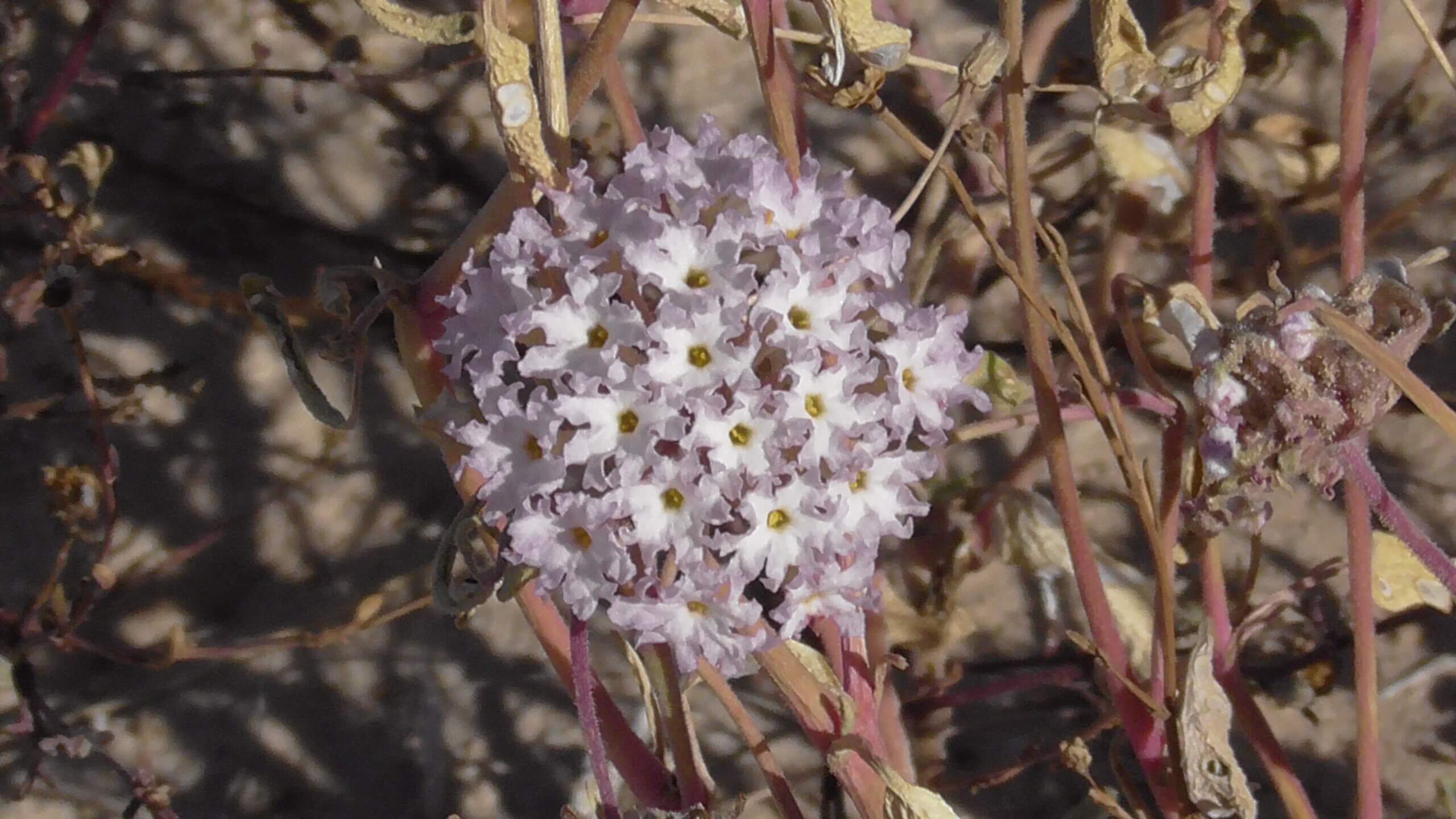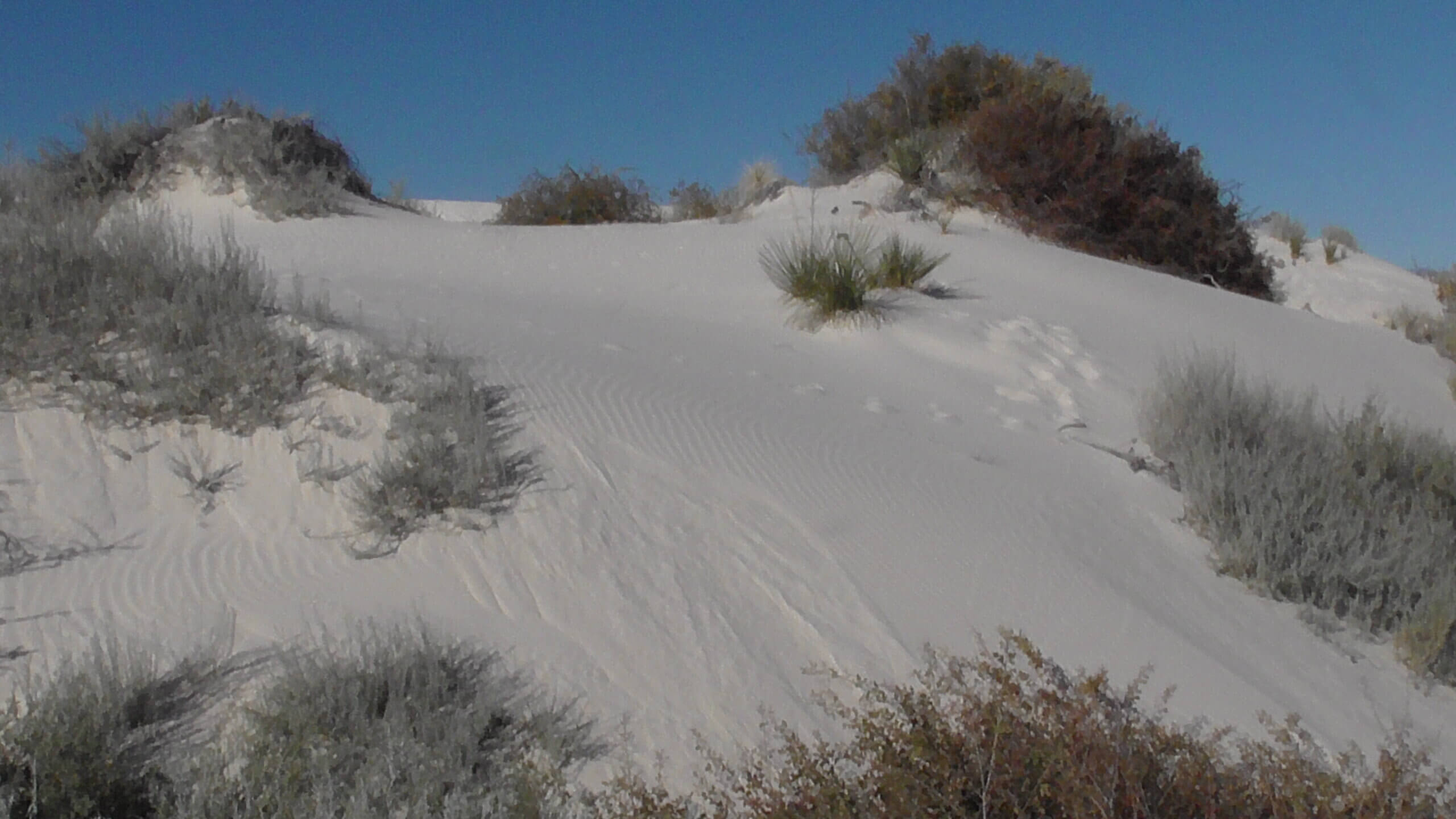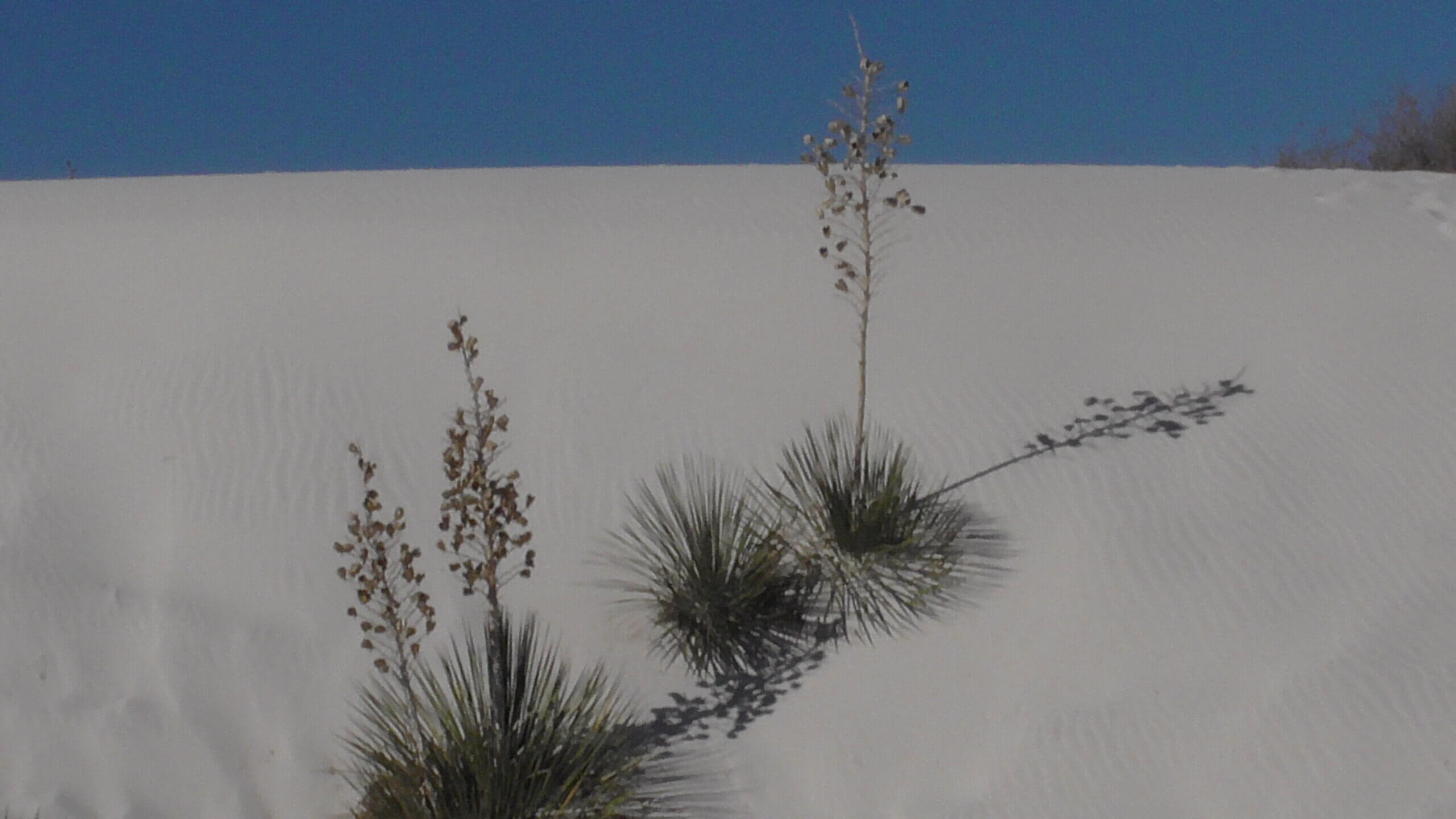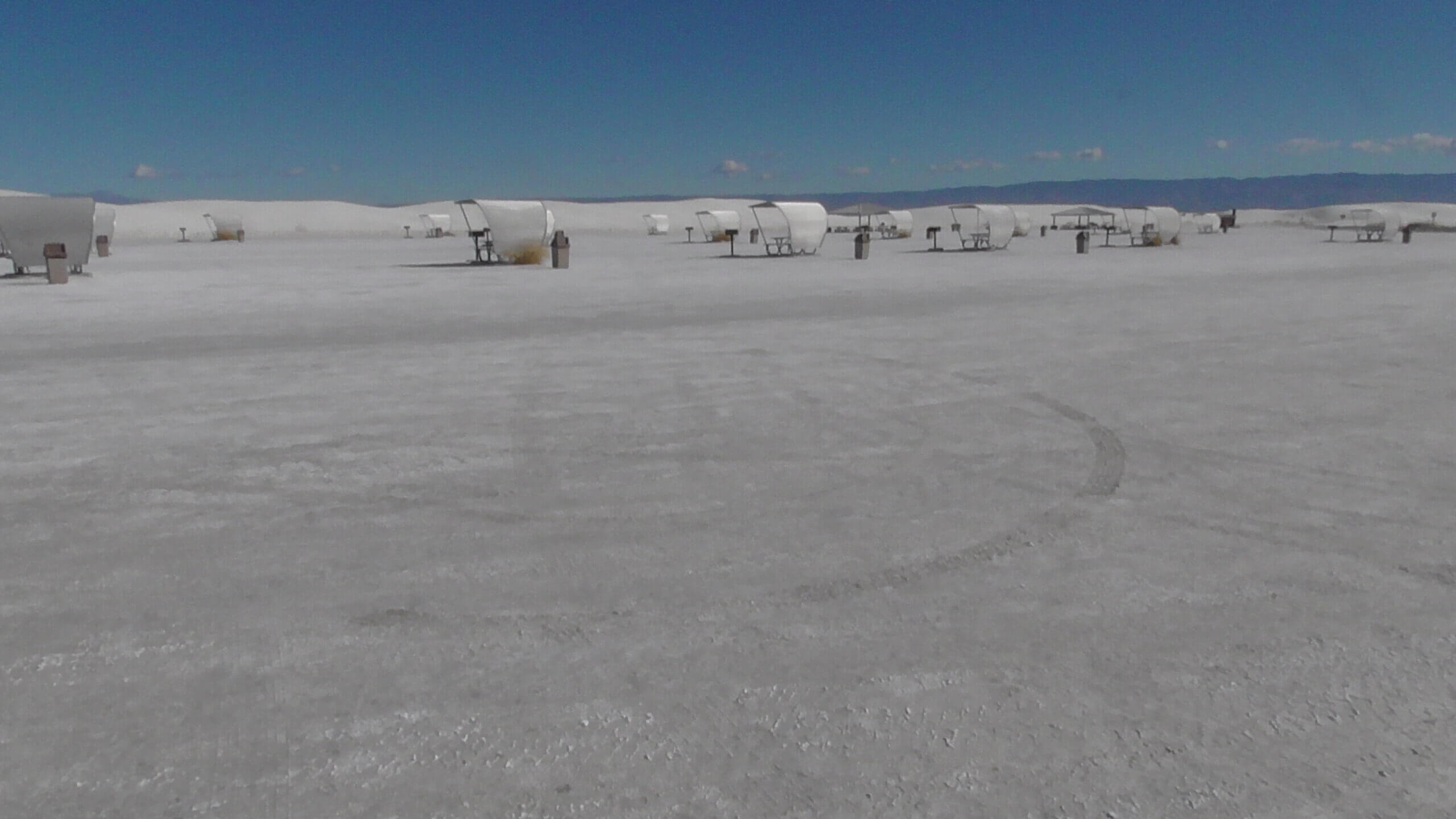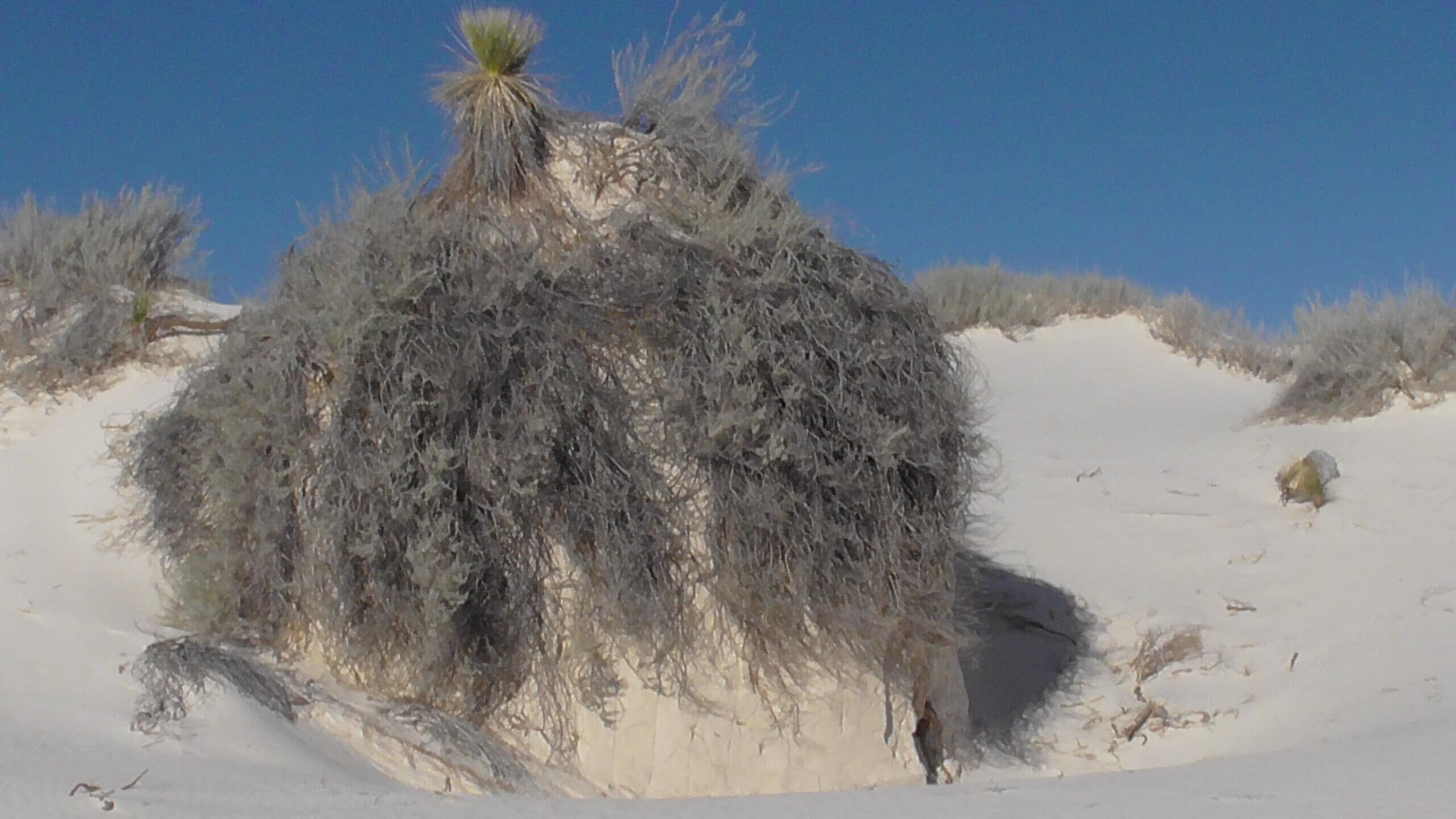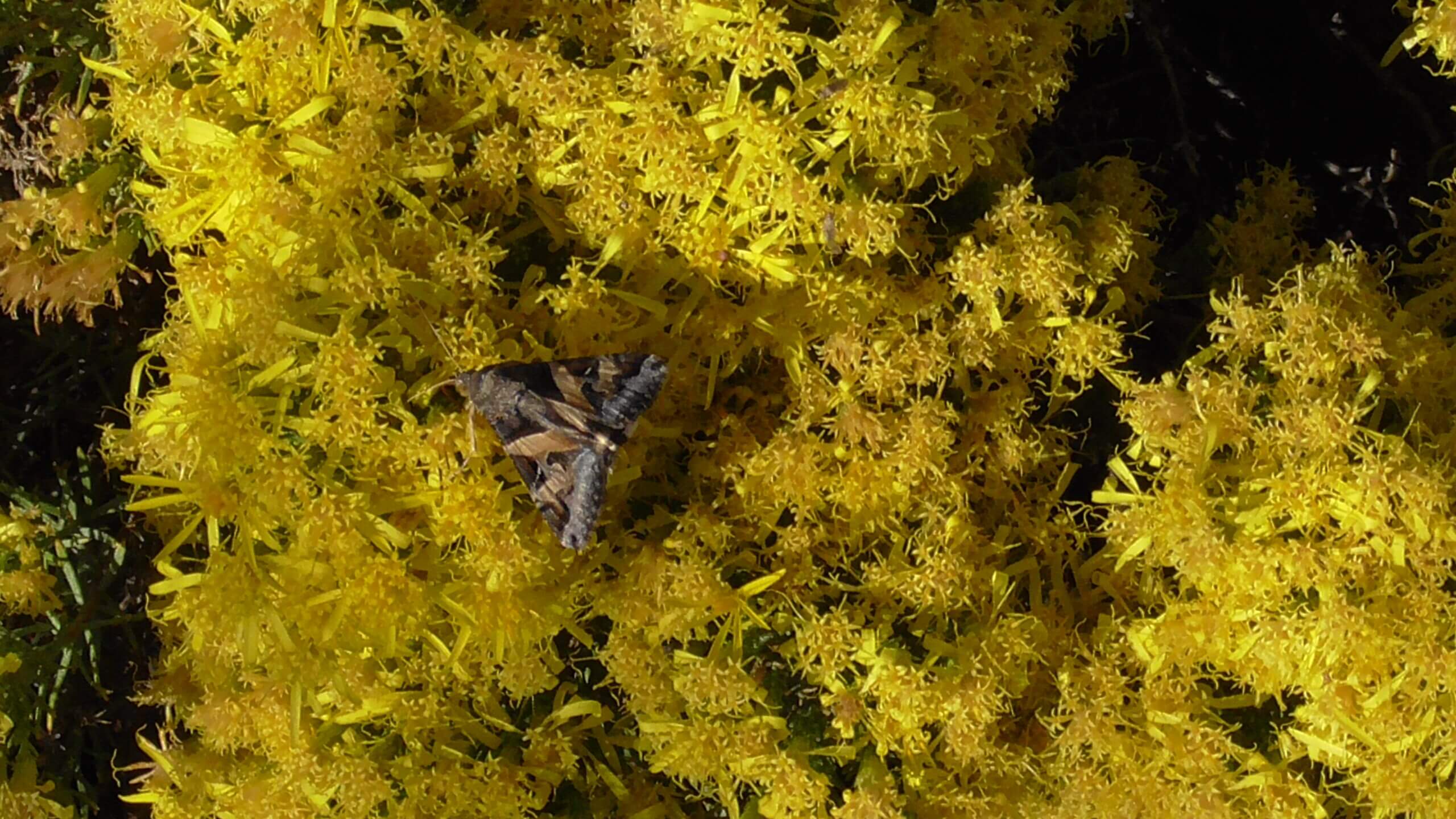White Sands National Park
White Sands National Park was created from White Sands National Monument in 2019.
The park covers 228 sq mi in the Tularosa Basin, including the southern 41% of a 275 sq mi field of white sand dunes composed of gypsum crystals. This gypsum dunefield is the largest of its kind on Earth, with a depth of about 30 feet, dunes as tall as 60 feet, and about 4.5 billion short tons of gypsum sand.
As the climate warmed after the ice ages, rain and snowmelt dissolved gypsum from the surrounding mountains and carried it into the basin. Further warming and drying caused the lakes to evaporate and form selenite crystals. Strong winds then broke up crystals and transported them eastward. A similar process continues to produce gypsum sand today.
Thousands of species of animal inhabit the park, a large portion of which are invertebrates. Several animal species feature a white or off-white coloration.
Some plants like skunkbush sumac and Rio Grande cottonwood can hold on to moist sand with their roots, forming pedestals beneath their foliage.
A fossil trackway of footprints of humans and ground sloths found at White Sands and dating from the last ice age shows that ground sloths were hunted by humans at least 11,700 years ago.
White Sands is also famous for the first atomic explosion on earth in 1945. The bomb site (Trinity) is actually about 60 miles north of the National Park, closer to San Antonio than it is to Alamogordo. It’s only open for visits twice a year.

